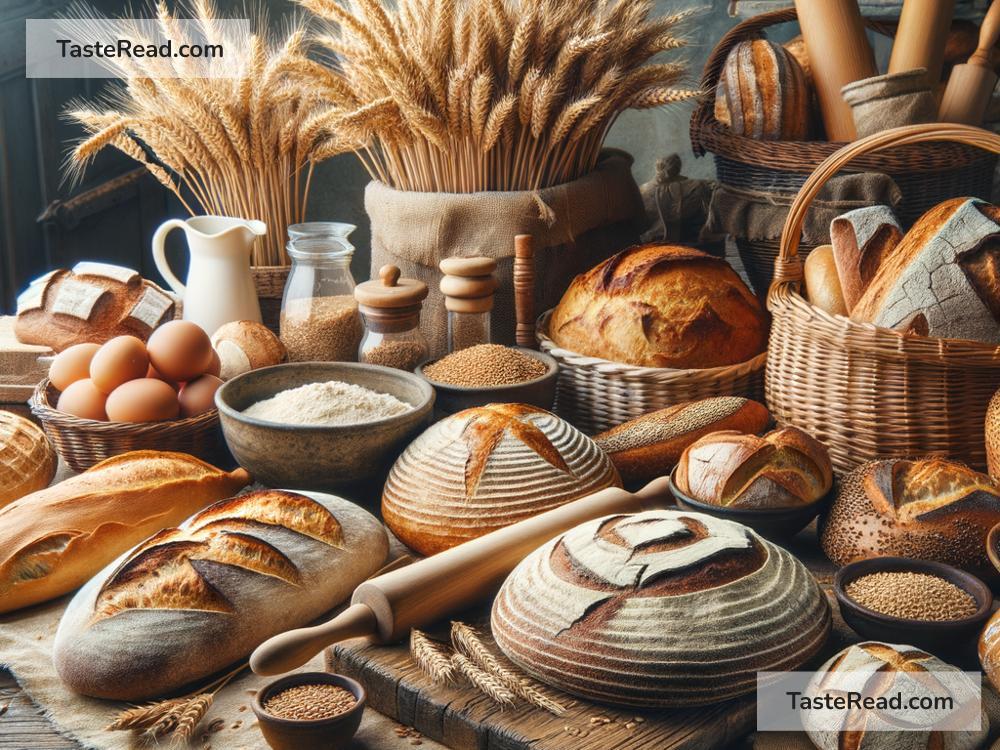The History of Bread Baking Techniques
Bread is one of the oldest foods known to humans. It has been around for thousands of years and is eaten in almost every culture around the world. The techniques used to bake bread have changed over time, becoming more advanced as people learned new ways to combine ingredients, control heat, and improve flavor. Let’s take a journey through history and explore how bread baking has evolved over the centuries.
Ancient Beginnings: Bread in Early Civilizations
Bread began with the very first human civilizations. Around 10,000 years ago, people transitioned from being hunters and gatherers to farmers. They grew grains like wheat and barley, crushed them into flour, and mixed the flour with water to create flat, unleavened bread. This type of bread didn’t rise, so it was dense and had a chewy texture.
One of the earliest forms of bread was likely baked by accident. Historians believe ancient people might have left a mixture of flour and water out in the sun, where it dried and hardened, creating the first bread-like substance.
Around 6,000 years ago, in ancient Egypt, something incredible happened. Egyptians discovered fermentation—when natural yeast in the air interacts with dough, causing it to rise. This discovery marked a turning point in bread-making. Egyptians were among the first bakers to make airy, leavened bread that looked more like the loaves we enjoy today. They even created clay ovens to cook the bread evenly, a technique that spread to other cultures over time.
Bread in Ancient Rome and Greece
The art of bread baking flourished in ancient Rome and Greece. Greeks introduced grinding stones to make finer flour, improving the texture of the final bread. They also added ingredients like honey, oil, and nuts to make it taste better.
Romans, on the other hand, took bread baking to the next level. They learned from the Greeks and developed bigger, better ovens. Roman bakers used different types of flour to create various kinds of bread, which were baked in public bakeries. Bread became such an important part of Roman life that skilled bakers were considered highly valuable. They even had schools to train bakers!
Throughout this time, bread remained a staple food for rich and poor alike, though the wealthy often had access to finer, whiter bread, while the poor ate coarser, darker loaves.
Medieval Times: Innovations in Bread Baking
During the Middle Ages, bread baking continued to evolve in Europe. Bakeries became important businesses in towns and cities, and laws were created to ensure fair prices and good quality bread for everyone. Bread ovens became more advanced, allowing bakers to control the heat while cooking better-tasting loaves.
This period also saw the development of sourdough bread, made by using a fermented starter instead of dry yeast. Sourdough provided a tangy flavor and was popular among bakers and eaters.
Despite these advancements, bread in medieval times was still made by hand. It required a great deal of labor, and bread-making was often considered a family or communal activity.
The Industrial Revolution: Bread Goes Big
The Industrial Revolution in the 18th and 19th centuries brought massive changes to bread baking techniques. Machines replaced hand tools, making the process faster and easier. Mills became more advanced, producing finer, whiter, and cheaper flour. Factory ovens allowed bakers to produce bread on a much larger scale than ever before.
People’s eating habits also changed during this time. White bread, made from refined flour, became highly popular, as it symbolized cleanliness and wealth. Darker breads, such as whole grain or rye bread, were seen as food for the poor.
Around this time, bakers began experimenting with commercial yeast, a breakthrough ingredient that allowed bread to rise consistently and quickly. This innovation made baking more reliable, as bakers no longer needed to rely on wild fermentation or sourdough starters.
Modern Times: Bread in Every Flavor and Shape
In the 20th century, new technologies completely transformed bread production. Bread-makers used chemicals and preservatives to make bread last longer, ensuring it could be transported to grocery stores worldwide. Factories introduced automatic bread slicers, creating the pre-sliced loaf, which revolutionized convenience.
Today, bread can be found in every shape, size, and flavor imaginable. There are traditional breads like baguettes and naans, as well as modern creations such as gluten-free or high-protein loaves. Many people still bake bread by hand, enjoying the tradition and creativity of home baking despite the convenience of store-bought options.
With the rise of small artisan bakeries, bread production is returning to its roots in some ways. Artisan bakers focus on high-quality ingredients, slow fermentation methods, and unique flavors to deliver fresh, handmade breads. Techniques like sourdough bread-making are experiencing a resurgence as people look for healthier, more natural options.
Conclusion
Bread has come a long way from its humble beginnings as a simple mixture of flour and water. Over thousands of years, humans have refined baking techniques, creating new flavors, textures, and shapes. Each culture has added its own unique touch to bread-making, making it a universal food that connects people across the globe.
Whether baked in a clay oven in ancient Egypt or a modern bread machine today, bread continues to be a symbol of sustenance and community. As technology advances and baking traditions are rediscovered, one thing remains certain: bread will always hold a special place in our kitchens and hearts.


